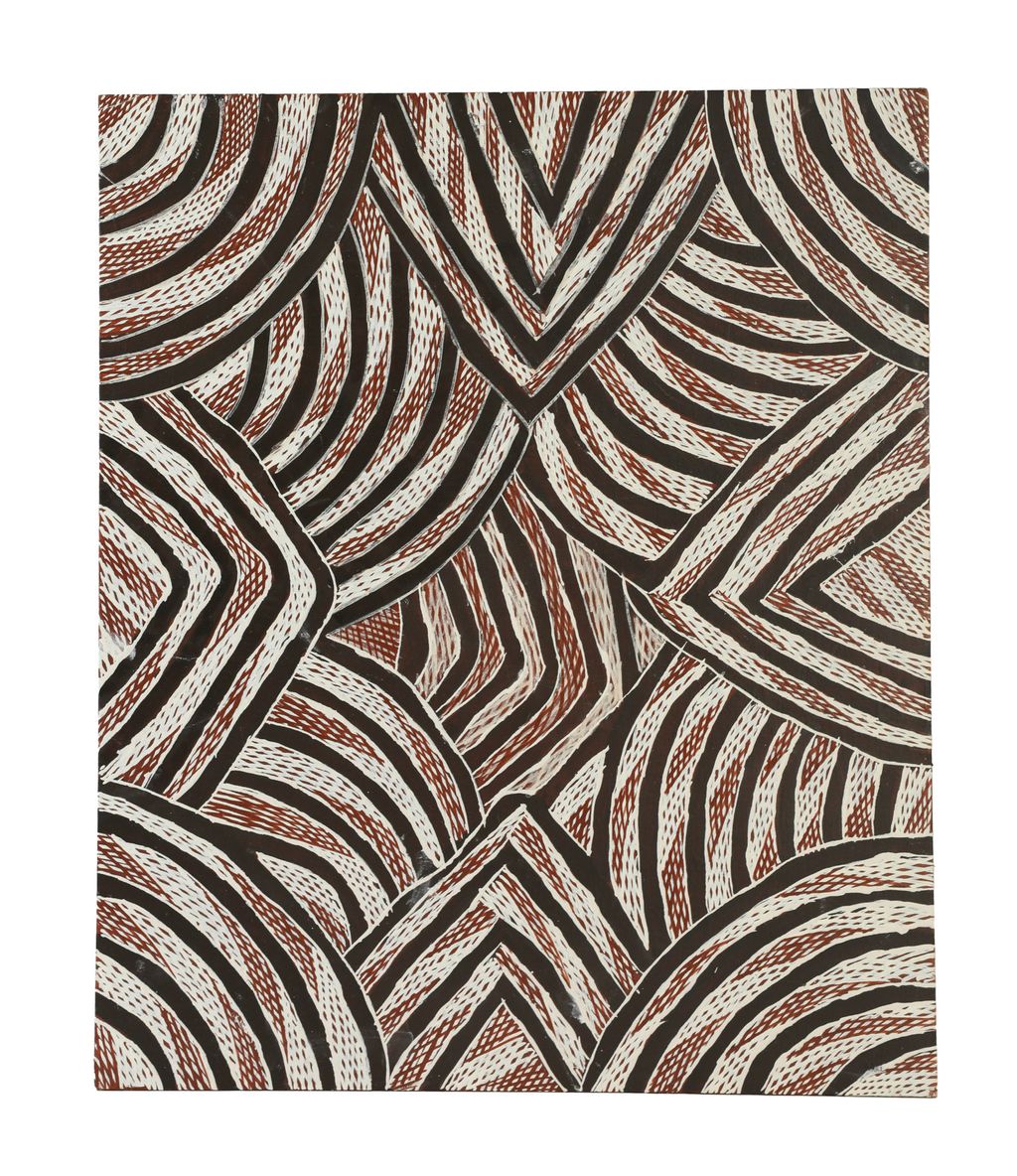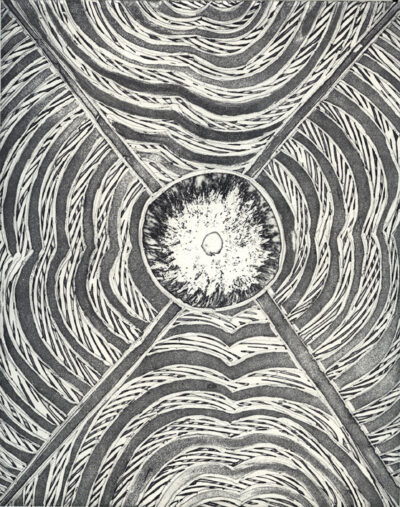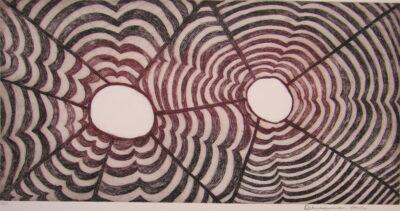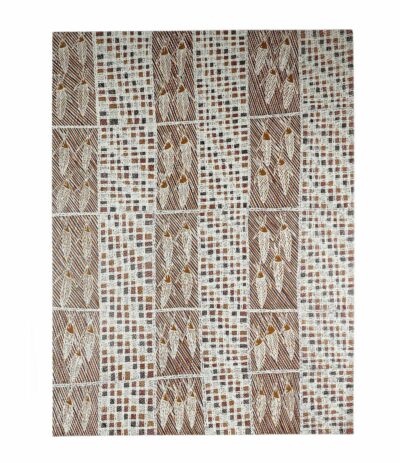Description
dhuwarrwarr marika
Earth pigment on board
61 x51 cm
Year: 2023
ID: 9313-22
Rulyapa
This miny’tji represents Rulyapa, the rough saltwater country between Nhulunbuy and the large island of Dhambaliya (Bremer Island), ballooning up from the secret depths, around the sacred rock Manhala, which can be a manifestation of Daymirri. Daymirri is the whale (or perhaps sea monster) that according to Rirratjiŋu and Djambarrpuyŋu clan manikay (sacred song) pertains to the saltwater country close to Yirrkala.
The dome-shaped rock Manhala exposes itself at the low tide, above the raŋ (tide marks), bleached white, a patina of brine and weather. Manhala is one of many names given to the rock. Djambarrpuyŋu and Rirratjiŋu clans have many ‘deep’ names that are intoned by the ritual specialists at the culmination of appropriate ceremony. The sea surrounding the rock, its tidal movements, differing states and the effect it had on Yolŋu visiting this site in Ancestral times is all recorded in the sacred song. As are all the totemic species of marine life that has these ancestral connections to the Rirratjiŋu and Djambarrpuyŋu.
Often painted in this design is Daymirri the whale, Balpa the rock cod, Djumbarr the red emperor, Ḏarrpa the king brown snake and Mutjalanydjal, the dolphin. All of these things and all of their meanings are implied simply by the presence of the miny’tji for the water. It’s not just Manhala and the power associated with deep seated knowledge that makes this area both sacred and dangerous to those entering with out authority. There are three other rocks in the area of same qualities but these ones; Wakwakbuy, Mulŋuwuy and Dharrpawuy, are submerged.
The Larrakitj had its traditional use for the Yolŋu of North east Arnhem Land as an ossuary or bone container erected as a memorial to a dead kinsman up to a decade after death. After death the body of the deceased was often ceremonially placed on a raised platform and left to the elements for an appropriate time. The area would then be abandoned until the next stage of the ritual.
This took place once it was determined that the essential eternal spirit of the deceased had completed its cyclical journey to the spring from which it had originated and would in time return again. This might be several years. Whilst the body was ‘lying in state’ others got wind of the death, perhaps by subliminal message and made preparations to journey to the site of mortuary. Usually enough time had elapsed for the bones of the deceased to be naturally cleansed on the platform. The essence of the soul within the bone was made ready for final rites when other outside participants necessary for its safe journey arrived. Ritual saw the bones of the deceased placed within the termite hollowed memorial pole for final resting. Mortuary ritual would end with the placement of the Larrakitj containing the bones standing in the bush. Over time the larrakitj and its contents would return to mother earth.
The Larrakitj has often been referred to as the mother’s womb. Once sedentary mission communities were established in Arnhem Land it became impractical to abandon permanent communities and outlawed to expose corpses on platforms. However the cosmology of the Yolŋu and the essence of ritual mortuary ceremony remains just as important. Larrakitj continue to be produced as the equivalent of headstones or to contain the personal effects of a deceased (which might be dangerous unless removed from the living because of the emanations imbued by contact with the deceased).
A further role for this cultural form is as a fine art object and an instructional tool for younger generations. Artworks of this nature have multiple layers of metaphor and meaning which give lessons about the connections between an individual and specific pieces of country (both land and sea), as well as the connections between various clans but also explaining the forces that act upon and within the environment and the mechanics of a spirit’s path through existence. The knowledge referred to by this imagery deepens in complexity and secrecy as a person progresses through a life long learning process.






Reviews
There are no reviews yet.